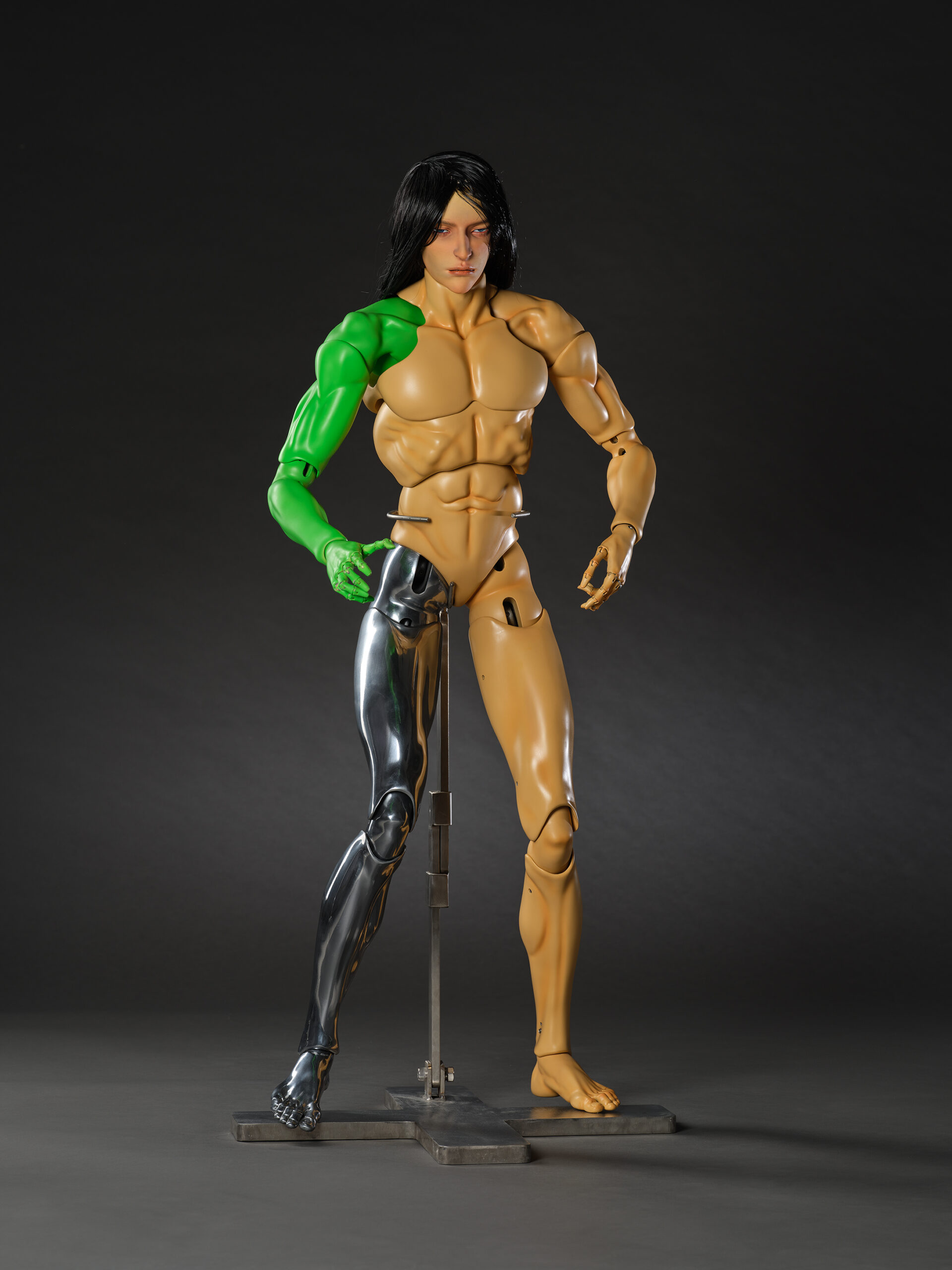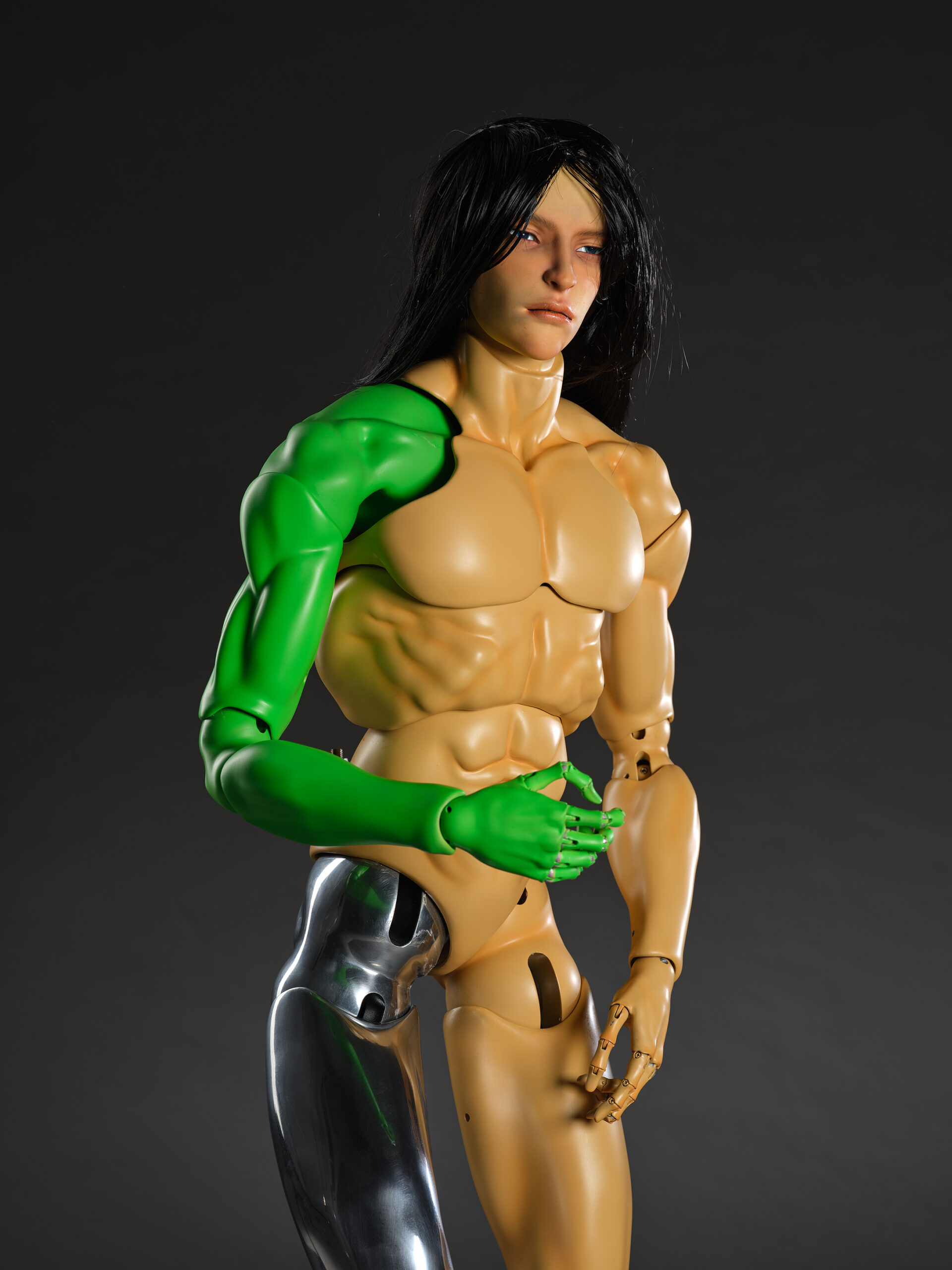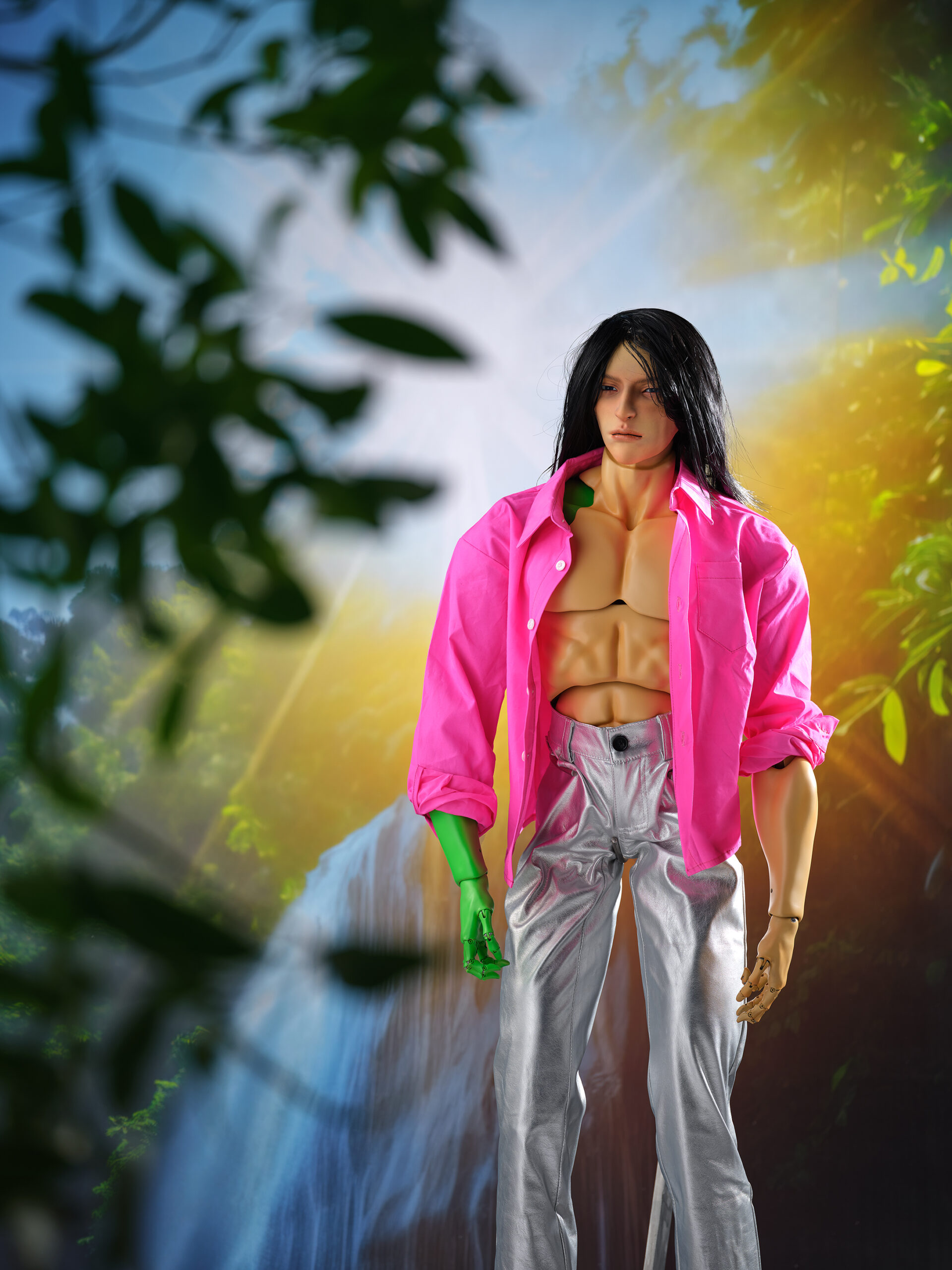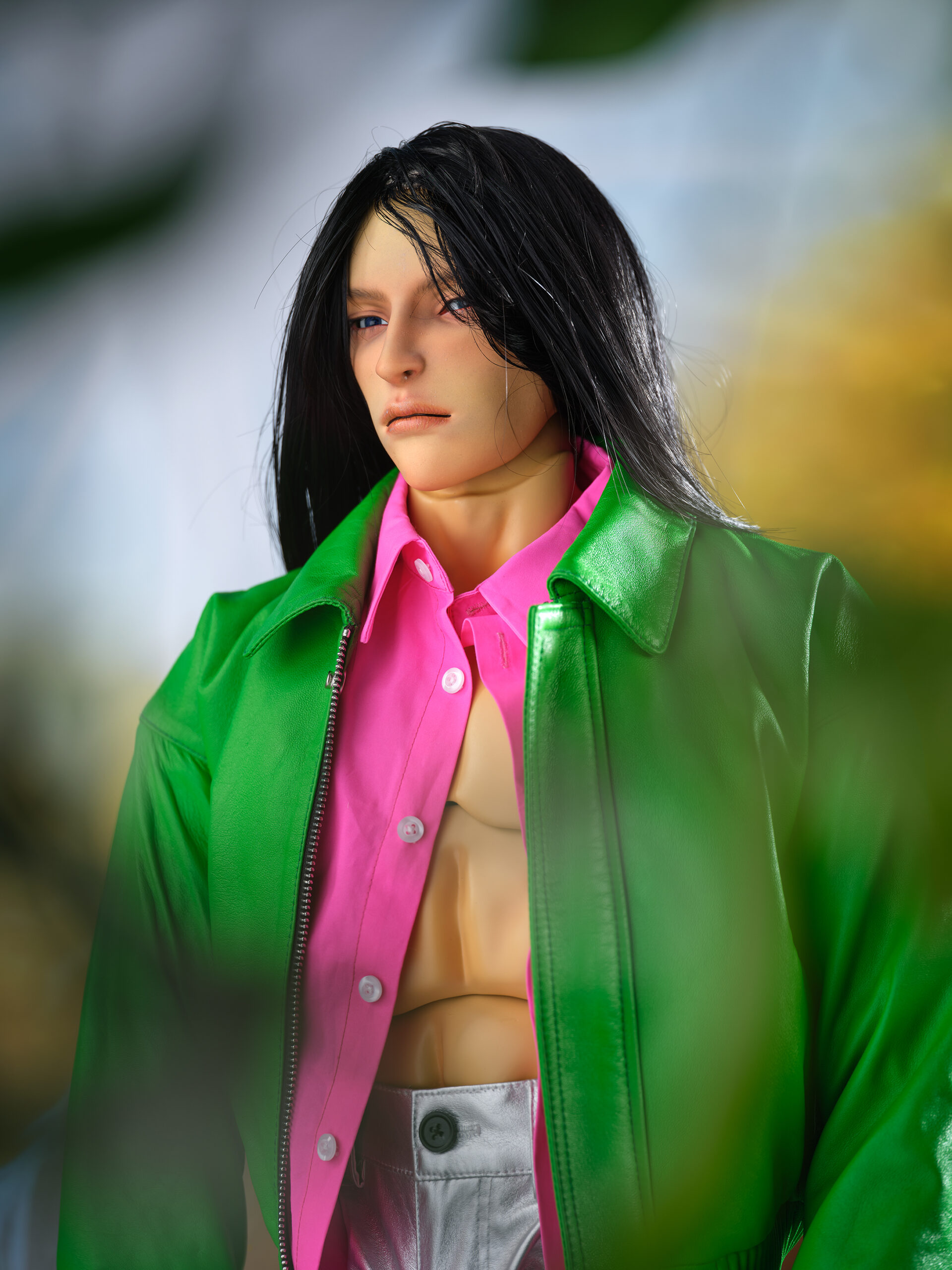COMPLEX CHIMERIZATION, PLANT NOT HUMAN AND MORE...
AI / Art / Culture / Design / Fashion / Photography / Technology
Nik Kosmas is redefining perceptions of production and its bodily relation to digital processes. Through meticulously crafted sculptures, paintings, fashion and designed objects, the boundaries between reality and imagination are blurred, allowing us to reflect on the material nature of our increasingly digitally effected anatomy.
-Brennan Stalford
Known for his significant contributions to the post-internet art scene as one half of AIDS-3d, Nik Kosmas has moved to a more independent practice which is focused on exploring the relationship between the body, soul and material culture. With his most recent projects like Hellscape, he depicts the viewer’s underlying desires and anxieties by presenting an apocalyptic landscape that contemplates mortal fragility and the passage of time. A tragic comedy and orgy of excess, Kosmas provides an uncensored and humorous exploration of the fun and suffering inherent to the human condition, we play, we fuck, we crash, we die, all things are circular. We feel like Robert Longo figures, we show our assholes to onlookers for a selfie and crucify ourselves. You just quit your day job, your hard drive is gone with all your ETH, you send a dick pic to your lover before jumping off the bridge listening to DeadMau5. Kosmas's work emphasizes the ever evolving effects of digital technology on the body and explores new concepts of collaboration through labor dynamics, advanced production methods, and complex manufacturing processes alongside heavy shit like desire, death, fantasy and rebirth.

Brennan: You probably hate discussing by now, but I thought it would be a good start to share how your collaboration with Daniel Keller began and the origins of the Aids 3d?
Nik: We met during our foundation course at SAIC in Chicago. Initially, we weren't close, but in our second year, we ended up sharing an apartment. Our shared interests, possibly fueled by our love for cannabis, led us to venture into activities like attending machine gun festivals and female masking conventions. From the outset, our creative process was pretty erratic, spanning music, performances, photography, sculpture, and painting.We spent a lot of time getting high and thinking of cool stuff we could make. It was an organic evolution.

Brennan: How did this early experience of collaboration compare to say your current approach?
Nik: Even when I was in highschool I was trying to make collaborative projects, so it’s always been something I'm into. With Dan, our process typically began conceptually, basically screaming and arguing at each other until the idea got ‘tight’. Nowadays, instead of collaborating with a partner, I try to find people who are crazy good at one thing and tap into that. It’s a little more top down. People ask me if I have a studio, I tell them I have a supply chain.

Brennan: How do you think considerations of labor and craftsmanship factor into your approach to creating objects?
Nik: Something that made me nervous about most of the AIDS-3D era work Daniel and I produced was a sense of insecurity regarding its physical value. Post-Internet was at its core, pretty cynical. And a lot of what we made were very cheap readymades. The ideas were cute but the form… less so. But it was about the ideas and the meaning of the materials themselves more than the labor or craft of putting it together. Now, on the other hand, being in China, I’m much more involved in the technical processes. That is exciting for me but it can be opaque to the audience. Take, for instance, this recent project—a CNC milled aluminum anodized rose. I love the method as much, if not more, than the final sculpture. But most people have no idea what anodizing or STP files are. I don’t know if that’s a problem as long as the final work is evocative, but it’s something I've been reflecting on lately.

Brennan: Could you speak more on the process of translation from digital into physical and your experiences with production?
Nik: I came to China with no idea of what I did not know. In the beginning I gave vague input and things, to put it mildly, did not go well. So one part of the pipeline was learning communication skills and basic technical knowledge. The other part of it is knowing what can make what. I learned this through trial and error and failure. A spider made of glass will probably break.

Brennan: The comparisons between God Chair and Hellscape made me want to go a little deeper into this idea of labor. I’m thinking of the differences in processes between the two. Hellscape, with its arduous workmanship, reliance on manual labor, and insane detail, seems very different from projects like the God Chair, which appears to emphasize different processes, like topology optimization in generative design. A software which replaces solely human design processes with algorithmic techniques often optimized for additive manufacturing.
Nik: Hellscape merges traditional labor-intensive methods with new or even experimental processes. The first version of Hellscape started years ago in DAZ3d. Which is a fun but shit software. The project was canceled at that time. However, half a year later I came back to it with my guy Iustinian, using Zbrush. This was happening during the insane lockdown in Shanghai, so I was basically imprisoned in my apartment for 3 months. I wanted to use 3d-printed wax, which is usually used for jewelry, so that we wouldn't have to make molds for each figure…but these figures, at around 18cm, are relatively huge compared to a ring or a pendant. There was a ton of trial and error of different wax printing resins and ways of casting but finally in the end we got a workable process. The next step is bronze casting, which involves a lot of clean up and polishing and hand work to get the models reassembled and prepared for painting. Then it goes to the painters garage where they scrape automotive filler into the surface to make it cleaner and then start the process of priming and sanding all the figures. Then we start airbrushing them figure by figure, pant leg by severed head. We also had to develop some different painting techniques because the way you paint most miniatures with washes and dry-brush doesn't work the same way with car paint and solvents. The whole process took about 2 years. I cried when it was done. God Chair is something completely different. Autodesk Fusion360 had a period where they made the generative design tools free and I spent a month spamming out chair designs. I found a 3d printer who had a resin strong enough to make a model that could be used as a finished product and another factory to handle the polishing. It’s a fun piece but I honestly don't feel much authorship about it. I like the uncanny aesthetic of those models but … it’s basically a preset.

Brennan: The outcomes of these optimizations often have a Cronenbergian quality to them, they are mad bone-like or Venom-y. It's interesting how new technologies like this push us to reconsider our relationship to nature too. Your process is obviously incredibly rigorous, as evident from your stories and discussions. It's a tight mix of this mental craftsmanship with emerging technologies. I was wondering about your background as a personal trainer too and how your experiences have shaped your perception of how technologies interact with representations of the body.
Nik: I think it definitely helps with making sculptures of people. There’s a sense of anatomy and movement that comes from dancing and lifting and other sports. Also it’s important for me to have that totally other headspace of training.


Brennan: How do you think your approach to shaping your own body influences your artistic practice? If so at all.
Nik: One of my core drives is to be learning and problem-solving, which extends to my art-making process. Similar to fitness and training, acquiring new skills involves being comfortable with failing, improving, and in some way accepting that I probably wont go past a certain level of skill.


Brennan: I also wanted to ask, what the fuck was with you getting accidentally poisoned recently? I saw your post with the Chinese poison control where they told you to drink milk?? Hahaha.
Nik: Yeah, I don't know what I was thinking. It was like an insane moment, like when kids think they are eating candy and accidentally ingest poison. I mistook these little pellets for some delicious raspberry treat and ended up eating them. But as soon as it got in my mouth I was like omg what did I just do. It’s a powerful disinfectant and some people even use it for suicide…I seriously have no idea why I did that.
